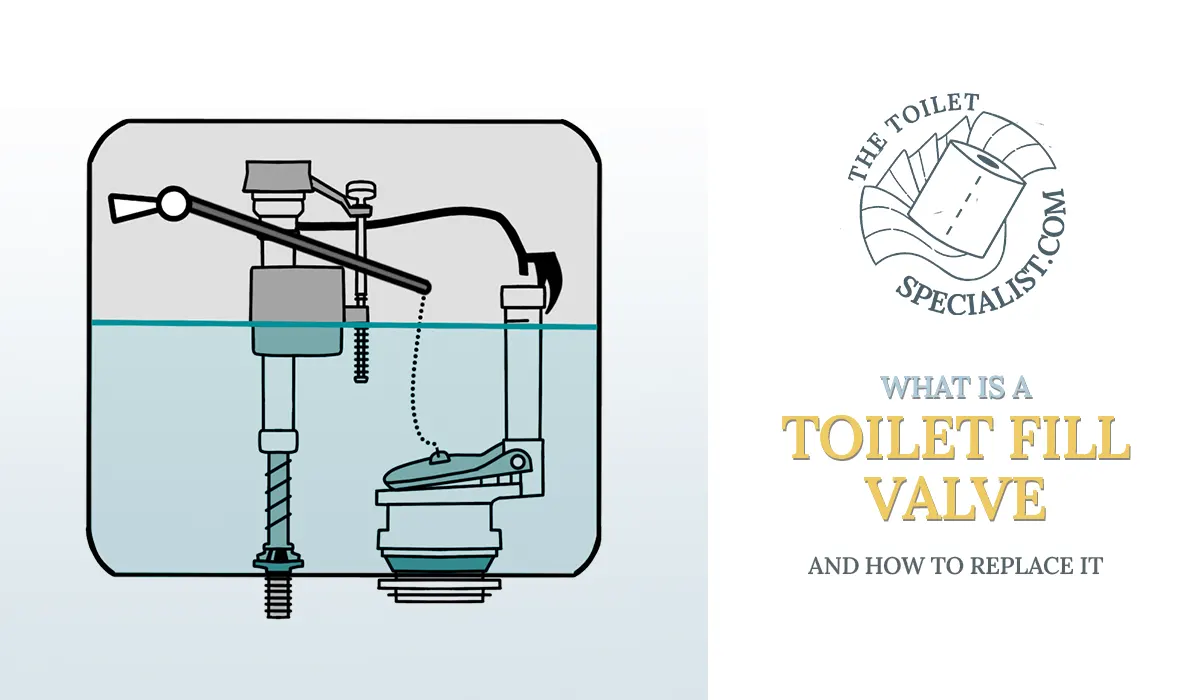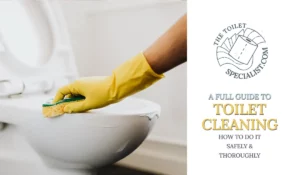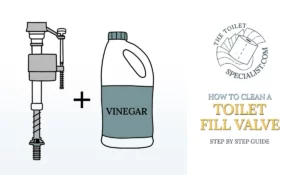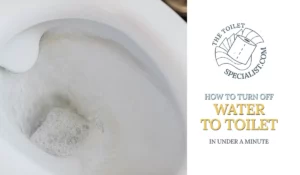Have trouble with your toilet fill valve? Let’s explore what might be wrong!
A toilet fill valve is a system sitting in your toilet tank that controls the water flow. A fill valve is important because without it your tank doesn’t know when to stop filling your tank with water. A fill valve opens and closes so that the correct amount of water can be used to flush your toilet.
Please keep reading to find out everything about fill valves and how you can adjust them correctly.
This article may contain affiliate links at no extra cost to you. AF links help support this blog so that it can exist and expand for years to come!
How does a toilet fill valve work?
A toilet fill valve works by having its floater (an object that floats on top of the tank water) connect to an arm that opens and closes the fill valve. Once the toilet is flushed, the water level drops which means that the floater drops as well, opening the fill valve. Once the water level rises the floater rises, which at its highest point closes the fill valve.
In the image below you see each part illustrated:
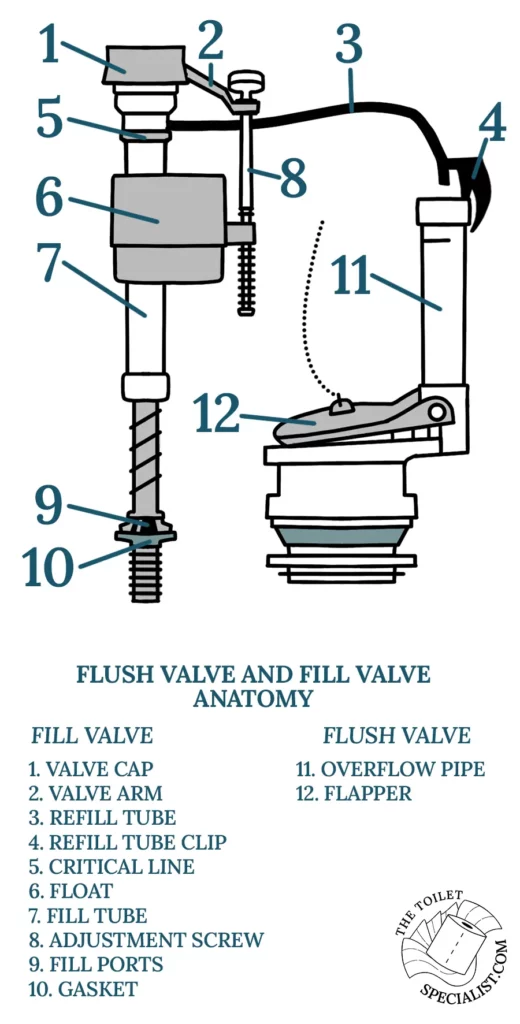
Here’s in order how a toilet fill valve works:
- The toilet is flushed by pressing the flush button or lever
- The lever tugs the string that is connected to the flapper which gets lifted
- Now water flows away from the tank and into the bowl
- The water level drops which makes the floater drop
- The floater floats on top of the water level
- Both the adjustment screw and valve arm drop as well (because they’re attached to the floater)
- The valve arm works as a lever which is why, when it’s dropped, it opens the fill valve
- Now new water flows all the way up the fill tube, and when it comes down again it goes out of the fill ports filling the tank
- The water level rises again
- Due to the rising of the water, the float will rise as well as the attaching adjustment screw and valve arm. A risen valve arm means that the valve is now closed
- Now no more water can enter the tank
If the toilet is flushed again, steps 1 through 9 happen all over again.
What triggers a toilet fill valve?
As you now know:
Flushing the toilet is what triggers a toilet fill valve. After flushing, the water in the tank drops which makes the float drops as well. The float is attached to an adjustment screw and valve arm which when lowered allows new water to flow into the fill tube.
As soon as the water rises the adjustment screw and valve arm rise as well which closes the fill tube. Now no more water fills the tank.
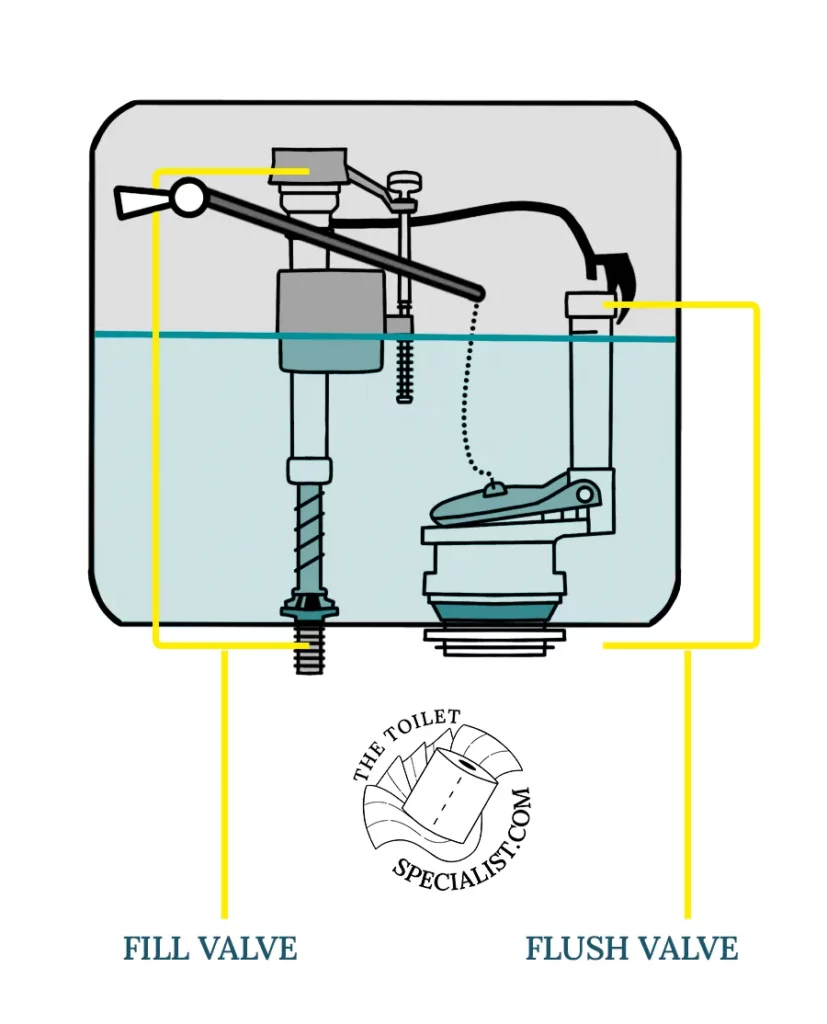
What happens if a toilet fill valve is broken?
When a toilet fill valve is broken the water keeps running. This unnecessary excess water use will result in a higher water bill. The water will never overflow your tank because the fill tube drains excess water into your toilet bowl.
Since the faulty fill valve cannot stop the water it will keep on running until the fill valve is either replaced or fixed. But don’t worry, you can still flush and use your toilet as normal.
If a part of the fill valve system is broken it’s most likely the rubber underneath the valve cap or the gasket at the bottom of the fill valve. These parts can be easily replaced.
How do I know if I need a new fill valve for my toilet?
It doesn’t happen very often that an entire fill valve breaks but it can happen. Sometimes you can fix it by cleaning your tank or by replacing a small part. The most common thing that might stop working is either the floater or the rubber underneath the valve cap.
You know you need a new fill valve for your toilet when there are unreplaceable tears or cracks in one of the fill valve’s parts or if calcium buildup damaged your fill valve.
You do not need a new fill valve when:
- Your toilet uses too much water
- Simply adjust the adjustment screw to a higher level
- Calcium buildup did not damage anything
- Simply decalcify your tank
- The water keeps running due to a faulty rubber underneath the fill cap
- You can replace this rubber
Luckily a damaged fill valve isn’t nearly as bad as using toilet wipes which result in a clogged toilet!
Can I replace a toilet fill valve myself?
You can install a toilet fill valve by yourself. Simply said, all you need to do is cut off the water supply, open the toilet tank, remove the water, take out the old fill valve, install the new one, and test it before putting back the toilet tank lid.
Another option would be to call a plumber, but these kinds of things can quickly add up in costs. You need to pay for the parts, as well as the time a plumber spends working at your house.
A plumber’s time and expertise will quickly cost you up to $300 to replace a simple fill valve. Replacing a it yourself shouldn’t take more than 15 minutes.
How to replace a fill valve yourself
The affordable Fluidmaster 400H-002 fill valve is used in the (video) example below.
Step by step guide to replacing a toilet fill valve yourself:
- Cut off the water supply
- Flush the toilet and take the lid off the toilet tank
- If your tank is hidden behind a wall take off the flush panel to get access to your fill valve
- To get rid of the remaining water in the tank hold down the flush lever to get rid of more water
- If there’s still a bit of water soak up the remaining tank water using a big sponge
- Remove the water supply line at the bottom of the tank
- This supply line is connected to your current fill valve
- Water may leak out of this line so keep towels underneath it
- Remove the nut of the fill valve that is sitting underneath the tank
- Take off the clip that is clipped to the flush valve and take out the fill valve
- The top of your fill valve should be 3 inches above the top of the flush valve. Adjust your new fill valve’s height by twisting it.
- Use a measuring tape for this
- Put the new fill valve in place
- Add the clip that comes with your new fill valve to the flush valve
- Connect the refill tube to the clip
- Cut the tube if it’s too long
- Screw on the new nut to the bottom of your fill valve and tank
- Don’t screw it too tight or the bowl may break
- Connect the water supply line
- Turn the water back on
- The water should stay about 1 inch from the top of the flush pipe. Use the adjustment screw to get the correct water level.
- Turning the adjustment screw clockwise raises the water level
- Flush after adjusting the screw to see the new water level
- To check the water in the bowl mark the current water level inside the bowl
- Pour 1 gallon of water slowly into the bowl
- Flush the toilet
- The new bowl water level should match your mark. You can add or reduce the amount of water by adjusting the knob that says water/bowl
That’s it!
Step by step video on how to replace a toilet fill valve
Here is a step by step video on how to replace a toilet fill valve yourself.
Toilet fill valve problems and how to solve them
There are a few problems that may arise when it comes to your fill valve. It’s usually calcium buildup or deteriorating parts. Here are some common toilet fill valve problems and how to solve them yourself:
- Water keeps running:
- Check if the rubber underneath the valve cap is still intact. Sometimes there is a small tear that is invisible to the eye. Replace this rubber to fix it
- Tank uses too much water when flushing
- Adjust the adjustment screw to a higher level. The higher the screw, the faster the tank will stop adding water.
- The float is stuck due to calcium buildup on the outside of the fill tube
- A float that doesn’t move results in water that keeps running
- Regularly decalcify your water to prevent this from happening
- Your tank takes a long time to fill with water
- This is due to calcium buildup inside the fill tube. Decalcify your water to fix it. Do this every now and then to prevent this from happening
- The part where your water is connected to your tank leaks
- Your fill valve’s gasket may deteriorate over time. Fix this by replacing the gasket
As you can see you can replace these parts. But entirely replacing your fill valve can be done as well. It isn’t that much of a hassle and it doesn’t cost much.
Best toilet fill valves
If you need a replacement, these toilet fill valves types are best. They have tens of thousands of positive reviews and are very affordable:
- Fluidmaster 400H-002
- One of the most popular universal fill valves
- Fluidmaster 400CRP14
- Includes a fill valve and a 2-inch flapper
- TOTO TSU99A
- Universal fill valve by the well-known toilet brand TOTO
Are toilet fill valves universal?
Most of toilet fill valves are universal because they are able to adjust their height. You can also cut the cable that goes into the flush pipe. Always read the instructions before purchasing!
Frequently asked questions about toilet fill valves
Here are some frequently asked questions regarding toilet fill valves answered short and sweet.
How do I know if my toilet fill valve is bad?
Your toilet fill valve is bad when your tank water keeps running or when your tank takes a long time to fill.
How does a toilet know when to stop filling the tank?
A toilet has a floater which connects to an arm. After the tank fills with water the floater goes up due to the rising water. The arm that connects to the floater seals off a rubber part which stops water from entering the tank.
What controls water flow in a toilet tank
The fill valve controls water flow in a toilet tank.
Disclaimer: TheToiletSpecialist.com is not responsible for any damage caused to your toilet by (wrongly) interpreting information found on this site. Please seek custom advice from a professional to evaluate your current situation.

